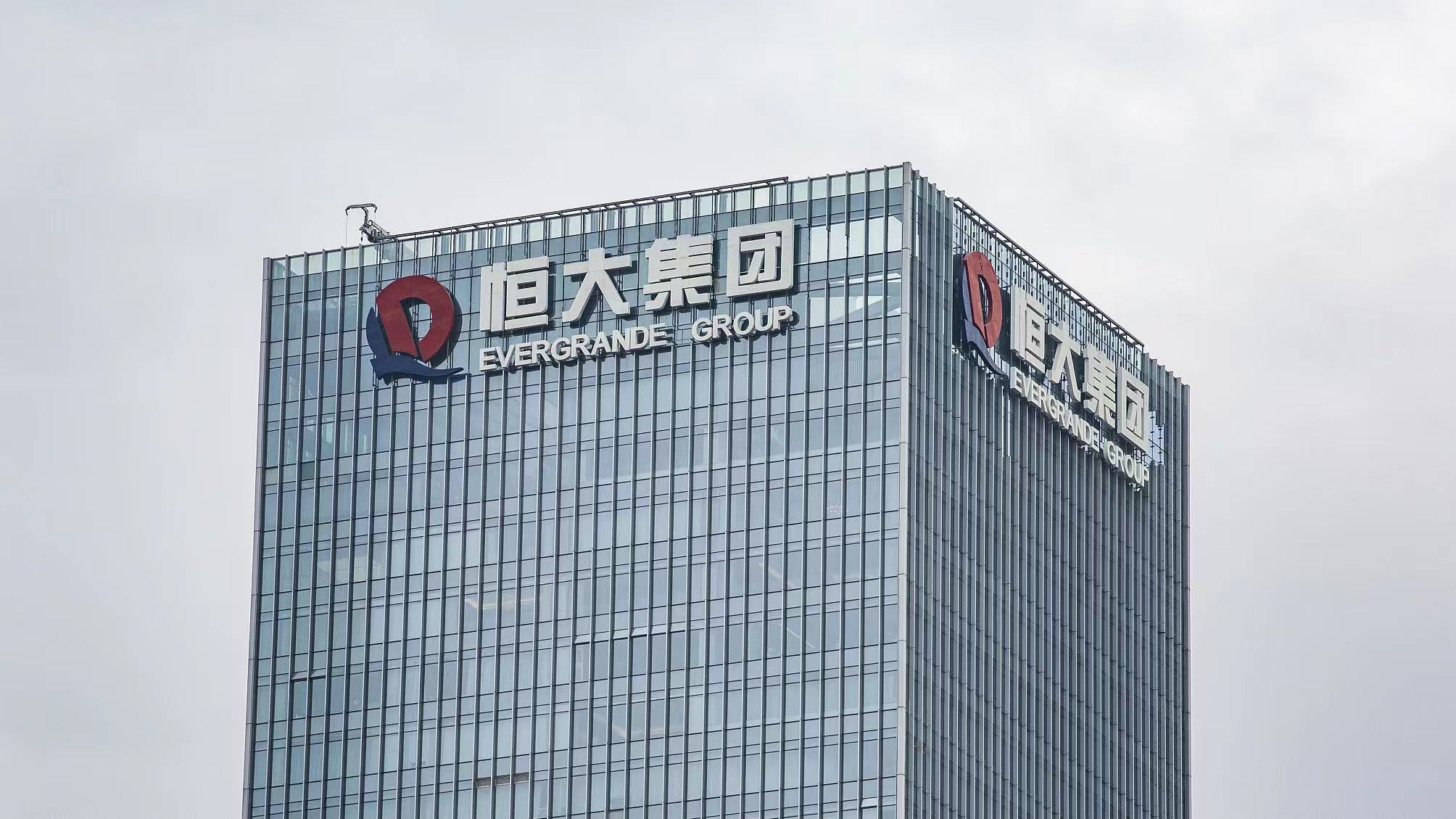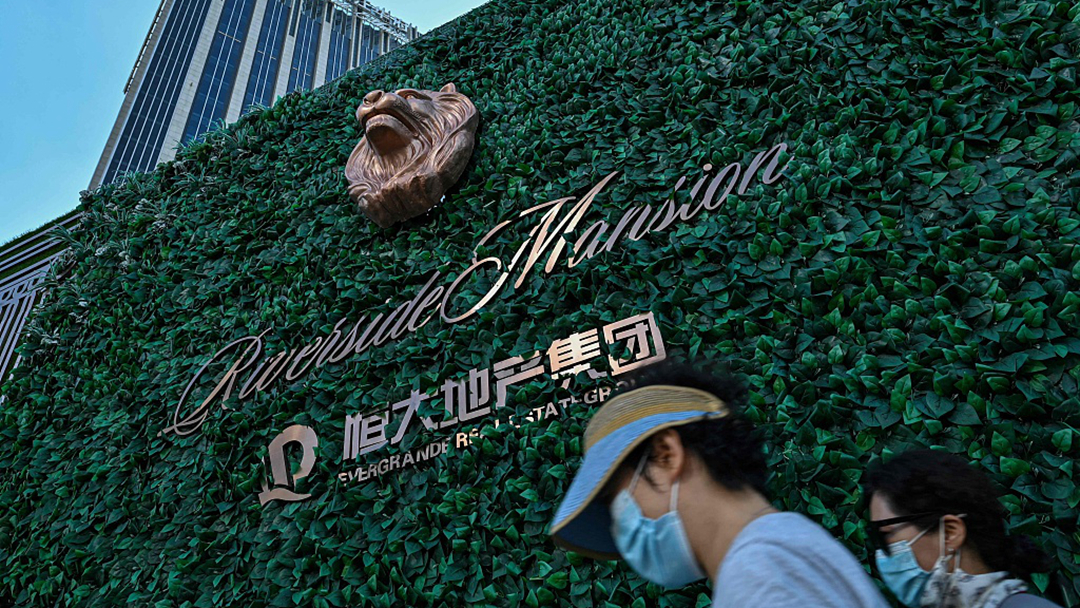
The headquarters of Evergrande Group in Shenzhen, Guangdong Province, south China. /CFP
The headquarters of Evergrande Group in Shenzhen, Guangdong Province, south China. /CFP
Editor's note: Daryl Guppy is an international financial technical analysis expert. He has provided weekly Shanghai Index analysis for Chinese mainland media for more than a decade. Guppy appears regularly on CNBC Asia and is known as "The Chart Man." He is a national board member of the Australia China Business Council. The article reflects the author's opinions and not necessarily the views of CGTN.
Moral hazard is the lack of incentive to guard against risk because one is protected from failure. It's said to apply in China where there is an expectation that the government will step in to prevent adverse market or company events. The current events around China's property company Evergrande is supposedly an example of problems created by moral hazard.
Other analysts have delved into the potential impacts of Evergrande's collapse but it's more important for investors to consider the wider policy implications of the Evergrande situation because that provides a guide to how future Chinese investment prospects may be managed.
When it comes to China, it seems acceptable for a single analyst to simultaneously hold contradictory views. On one hand, they scoff at China because they believe the government controls everything so, unlike Western governments, it will come to the rescue of failing markets and companies. On the other hand, they scold China for not coming to the rescue of failing companies and markets because of the damage it might do to Western interests.
Such simultaneous contradictory views are not just confined to analysis of Chinese market issues. These same analysts point to the Lehman Brothers collapse as an example of the way indebted companies are allowed to fail in the West, but they ignore the millions of taxpayers' dollars poured into saving other U.S. banks. They ignore the accommodative policy that permitted the banks to walk away from the destruction they had wrought in the U.S. and global economies stemming from the collateralized debt obligations debacle. They were considered "too big to fail." This is the ultimate moral hazard in Western financial markets.
The key Evergrande question is: Collapse or rescue? Both Western and Chinese reactions help provide an answer.
Long Term Capital Management was a U.S. hedge fund that used absolute return trading strategies combined with high financial leverage in derivatives instruments. Its directors included Myron Scholes and Robert C. Merton, who shared the 1997 Nobel Memorial Prize in Economic Sciences for developing the Black–Scholes model used in option pricing.
The initial success came to a crashing halt in 1998 when they lost $4.6 billion in less than four months. At the time, the collapse was considered a major threat to the financial system, so 14 financial institutions were mustered to deliver a $3.6 billion recapitalization under the supervision of the Federal Reserve.

People walk past a residential building developed by Evergrande in Shanghai, China, September 22, 2021. /CFP
People walk past a residential building developed by Evergrande in Shanghai, China, September 22, 2021. /CFP
Although there may not have been a moral hazard expectation that Long Term Capital Management would be bailed out, the government-led rescue points directly to the moral hazard involved in the 2008 bailouts of the U.S. financial system.
The Western consensus seems to be that this U.S.-led bailout was an exceptional response to a unique situation, although the 1990 rescue of Long term Capital Management following the $160 billion bailout in the Savings and Loans crisis suggests otherwise. This same consensus also suggests that the Chinese government will always bail out defaulting companies and struggling markets and that this belief creates a widespread moral hazard for the financial system in China.
This consensus conveniently ignores the resolution of the P2P industry collapse in China. P2P lending is a valuable service concept that enables the unbanked to access credit capital. The state banks had a stranglehold on credit services and were unwilling to take on the risk associated with extending credit to SMEs and startups without a credit history. Western banking services took on this risk by forcing borrowers to "mortgage the house" as collateral against the loan. This option was not available in China, so the government saw P2P lending as a viable solution.
Under a light-handed regulatory regime, the P2P lending services ballooned and mutated beyond their original purpose and became an instrument of mass financial destruction.
The process of restoring order was very painful. Hundreds of P2P lenders simply fled or defaulted when the regulation crackdown commenced. No individual P2P lender inflicted a billion-dollar loss, but collectively it's estimated that $115 billion was lost to investors.
Unlike the Savings and Loans crisis in the U.S., the Chinese government did not bail out investors.
Long Term Capital Management, the Savings and Loans Crisis and the 2008 bailouts show that moral hazard is a well-established feature of U.S. financial markets. China's P2P response shows that moral hazard does not absolutely rule the Chinese financial system. Companies, large and small, will be allowed to fail.
Evergrande problems are not primarily a product of moral hazard and will not be resolved under this framework. China's resolute response to the P2P industry is the evidence that businesses cannot rely on a cloak of moral hazard to protect them.
But so what if China bails out Evergrande? This would simply follow the well-trodden capitalist road.
(If you want to contribute and have specific expertise, please contact us at opinions@cgtn.com.)

